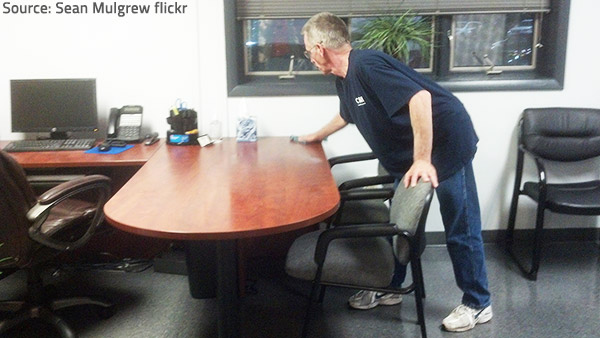How to Remove a Clog from the Main Sewer Line
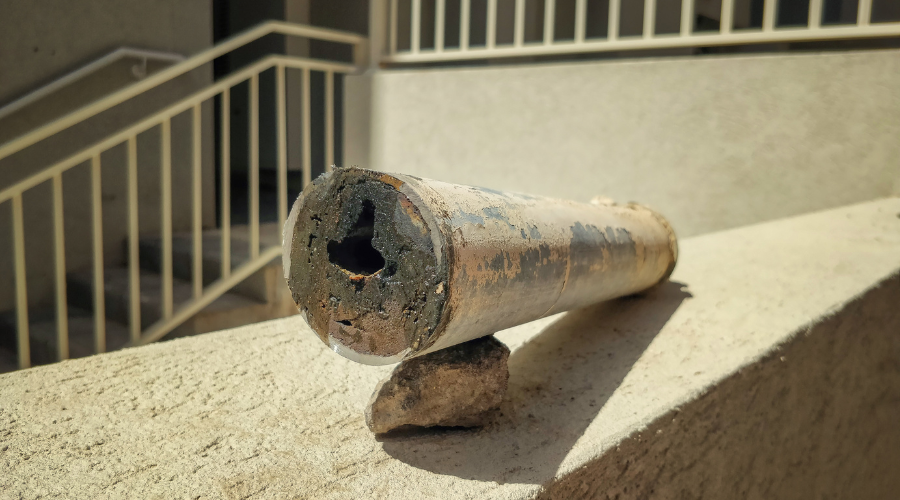
A clog in your main sewer line can quickly escalate into a significant problem, so it’s crucial to address it immediately. Ignoring the issue can leadLead is a heavy metal that can be toxic to humans, especiall... More to backed-up toilets, sinks, or tubs.
If you’re handy and enjoy DIY projects, you might be able to clear the main sewer line yourself. However, if you’re unsure about tackling this task, it’s best to call a plumber to avoid causing additional damage to your plumbing system.
In this guide, we’ll explore methods for cleaning your sewer lines and offer tips to prevent future clogs, saving you from costly cleanups and repairs.
Unclogging Your Sewer Line
There are three main ways you can unclogTo unclog is to clear obstructions from pipes, drains, or eq... More the main sewer line. The following are the steps and details for each of the three approaches:
Snake Your Drains
If you’ve decided to unclogTo unclog is to clear obstructions from pipes, drains, or eq... More your main sewer line yourself, here are some of the tools you will need to snake your drain:
- Work gloves (heavy-duty)
- Pipe wrench
- Auger (professional -grade snake)
- Garden hose
Here are the steps you will need to take to clear the main sewer line:
- Loosen the cap on the main line drainpipe.
- Open the cap quickly and move out of the way. Make sure to let the buildup fully drain out before you try fixing it.
- Put the auger (snake) into your drainpipe. Make sure to follow the instructions for your specific drainpipe. However, you generally just need to feed the snake into the drainpipe until you hit the clog. You will know when you hit the clog as it will be tougher to move through the pipe.
- Run the auger until you fully clear the clog. You will figure out when the clog is cleared as the water level in the drainpipe will decrease and then fully drain out. You should not stop running the drain snake as soon as the clog disappears. There could be small pockets somewhere else in the pipe which can cause you issues later.
- Pull the snake out of the pipe and hose off any debris. You may have to hose it off a few times before all the debris is washed from it. Finally, put the cap back on the pipe and tighten it back up with the wrench.
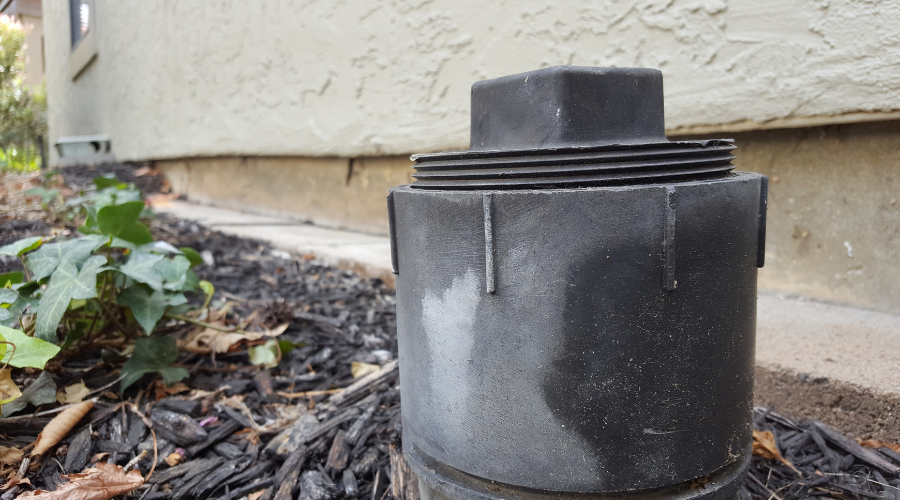
Check for Roots
The roots of your trees can grow into your sewer lines and cause blockages and damage. If you have constant clogs, a toilet that gurgles, and even slow drainage, you may have tree root infiltrationInfiltration is the process by which water, air, or other su... More on your hands. Here are some signs that you may have a tree root blockage at your property:
- Check the ground where you have your sewer line. If you have large trees nearby or wet patches, that means you may have tree roots that are encroaching on the sewer line.
- If your toilets aren’t flushing with their standard power and you’ve already snaked your toilet, you may have a tree root issue.
- If you have a cleanout point that is outside, make sure to open and inspect them. Sometimes the roots and root fibers can even start to protrude into the pipes.
- If you have a drain snake, you can manually explore your drain. If you notice major resistance when using the drain snake, that means that you have a tree root issue and not a typical blockage.
Use a Homemade Drain Cleaner
It is very easy to make a homemade drain cleaner. This type of drain cleaner does not use chemicals and can break up minor clogs caused by grease, soap buildup, and hair. The ingredients to use are: 1 cup of baking soda, 2 cups of white vinegar, and boiling water.
Here are the directions to follow:
- Remove any sold obstructions from your drain such as food particles or hair.
- Put 1 cup of baking soda down your drain.
- Pour 2 cups of white vinegar slowly down the drain over the baking soda. You will see some fizzing action, and this will help break down any gunk in your drain.
- Let the baking soda and vinegar sit in the drain for about half an hour so the clog can break down.
- After half an hour, pour some boiling water down the drain and flush it all down so you can get rid of any obstructions.
- Test your drain so you can ensure that the clog is gone. If you have any stubborn blockage, keep repeating the process.
If you have a blockage in your drain due to solid items or the clog is persistent even after you’ve tried this solutionA solution is a homogeneous mixture of two or more substance... More a few times, then you may need to call a professional plumber to clean the clog.
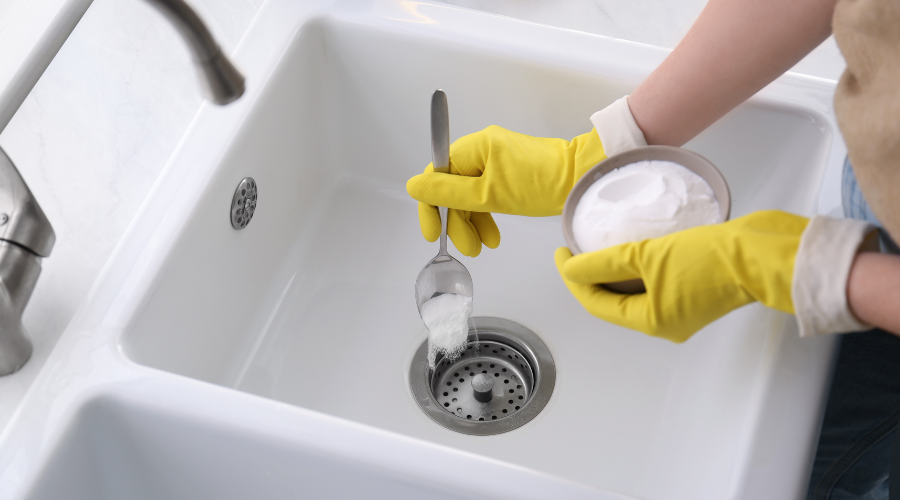
Preventing Sewage Clogs in the Future
Sewer clogs can be cleaned either as a DIY project or by a professional sewage cleaning company. However, this can get costly. This is why it is best to prevent any sewageSewage is wastewater containing biological and chemical cont... More clogs. Here are some things you can do to keep your sewer line clean:
- Do not pour fats, oils, and grease down your drain.
- Use strainers in your tubs.
- Use baking soda, vinegar, and boiling water to clear any build-ups in your drains.
- Be mindful of trees at your property as roots can block and invade sewer lines.
- At times, let cold water run to clear out debris.
Professional Sewage Backup Cleaning
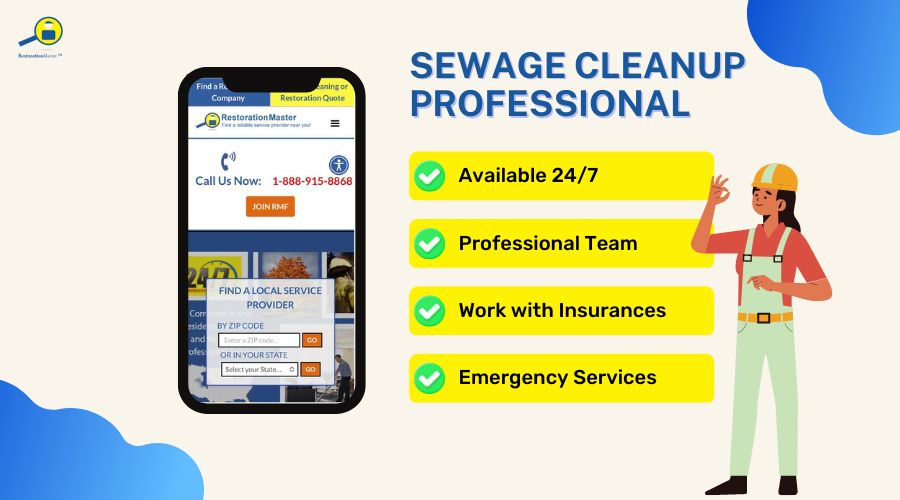
Have you experienced sewageSewage is wastewater containing biological and chemical cont... More backup at your home or business? RestorationMaster can help you find a professional in your area that can provide emergency sewageSewage is wastewater containing biological and chemical cont... More cleaning. These professionals will clean, dry, and restore your property back to its original state using the proper tools and equipment. You can rest assured that licensed and trained technicians can safely remove dangerous sewer water and thoroughly clean and disinfect your property to ensure safe conditions.












